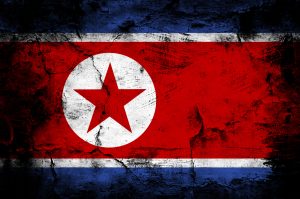North Korea fired two short-range ballistic missiles (SRBMs) into its eastern waters on Friday, South Korea’s Joint Chiefs of Staff (JCS) said.
The missiles flew about 250 km and 350 km, respectively, and were launched from the Sunan area in Pyongyang, the capital, around 4:32 p.m. KST. They were detected falling into the area off its east coast, according to the South’s JCS.
South Korean and U.S. intelligence authorities are analyzing the performance of the missiles.
Friday’s missile test came five days after North Korea launched two medium-range ballistic missiles (MRBMs). According a report from the Korean Central News Agency (KCNA), one of the North’s state-controlled media, this test was for the development of a reconnaissance satellite.
As part of its report on Monday, KCNA published captured images of Seoul and Incheon, the capital and the western port city of South Korea. However, South Korean experts downgraded the test due to the considerably low resolution of the imageries.
Kim Yo Jong, the powerful sister of North Korea’s supreme leader Kim Jong Un, harshly belittled the assessment and analysis of South Korean pundits on Tuesday. She also raised the possibility of launching an intercontinental ballistic missile (ICBM) at a realistic angle, as South Korean experts have shown doubts over the capabilities of the North’s Hwasong-17 ICBM, which was test-fired at a relatively high angle this year.
Considering the initial confirmation of the South’s JCS over the type of the North’s missiles tested on Friday, Pyongyang did not test its ICBM to follow up on Kim’s statement. North Korea conducted its first test of a high-trust solid-fuel motor on December 16, so it’s possible that the North tested a new type of solid-fuel ballistic missile as a follow-up. North Korea might have tested a new type of SRBM or a modified version of its current KN series missile systems.
This year, North Korea has launched at least 66 ballistic missiles – setting a new record for such launches in a year. The rapid pace of launches is part of Pyongyang’s firm willingness to successfully complete its five-year military modernization plan, which was introduced during the Eighth Congress of the Workers Party of Korea (WPK) in January 2021. In line with that plan, North Korea will likely take bolder moves involving a seventh nuclear test in the coming years.
Despite Pyongyang’s growing aggression toward its so-called adversaries in the region, Seoul and Washington have not shifted their fundamental approach to the North’s nuclear and missile threats.
The South Korean and U.S. militaries conducted joint air drills on Tuesday involving the U.S. B-52 strategic bombers and F-22 stealth fighters. Also, Seoul’s Defense Ministry announced that it will extend the scale of the joint military drills with the United States further next year.
South Korean President Yoon Suk-yeol has vowed to strengthen the country’s self-defense and deterrence capabilities against the North’s nuclear and missile threats by enhancing ties with the United States. Since Yoon took office in May, Seoul has actively reinvigorated the joint military drills with Washington.
As Washington also vowed to use every possible resource to defend its allies – Seoul and Tokyo – under U.S. extended deterrence, North Korea will seek to strengthen ties with China and Russia as a part of its efforts to construct a powerful anti-U.S. alliance in the region.

































